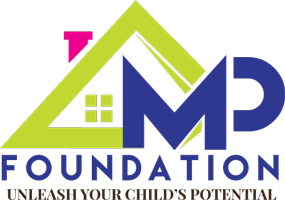An extensive collection of research has revealed that music can create a wide range of positive effects. It can help ease persistent pain, decrease blood pressure, and improve our mind frame. Research done on music grabbed the attention of doctors examining human cognitive abilities and learning. Consequently, music was found to be a catalyst for improving knowledge retention among learners. Here are a few examples of how introducing music to children can support educators in enhancing the learning experience in their students:
· Music magnifies learning experiences.
Many teachers use music to assist as an adjunct because it increases students’ enthusiasm for learning. Music stimulates emotionally, physically, and mentally; therefore, it can help teachers create a highly focused learning state. The result is students can quickly grasp a lot of information. Teachers can introduce music to the classroom by reading a summary of the class topic (with critical facts and figures) with select background music. For students, this otherwise tedious summary will now seem to be a trailer to a beautiful play – the plot of which will unfold during the lesson. An exciting musical composition will also help them to memorize the array of information presented.
· Music promotes learning.
Scientists started to explore the possibility of increasing learning retention with music. Researchers and scientists performed a range of innovative experiments, and their conclusions transformed teaching methodology. It introduced the whole child/brain learning approach called Accelerated Learning. Much information was learned about human learning processing during the test sessions. It has been found that these techniques are great for increasing knowledge absorption and retention and offer great opportunities for learning experiences that are far more effective than without music.
· Music helps students to retain learning.
To put it simply, when guided by music, new information is absorbed more readily. Students can correlate data to a rhythm and then use their memory of musical components to recall the info following their association. Teachers have been using rhymes, songs, chants, poems, tunes, and raps for a long time and discovered that these strategies help. How do we teach children the alphabet? By adding a song. Songs, rhymes, or rhythms help students to retain the content of musical pieces. Teachers can take the method further, and instead of providing their musical compositions to display, they can ask learners to write their lyrics for defined content. Teachers can consistently help students of all ages to remember and recall new information.
Furthermore, music strengthens a supportive environment. Music helps teachers create an effective environment supporting and provoking students to work hard, sparking their interest in learning tasks and focusing. Music can enliven a sleepy classroom and get students excited about learning. If your students are restless and cannot concentrate, music can calm them down and provide them with a mental balance. It’s a great idea to play a melody when students join the classroom – it will establish the appropriate atmosphere from the very beginning by inviting students to engage in your learning experience.
· Music stimulates students to concentrate.
Another unique role of music in the classroom is that it can influence human emotions and mental states. It produces a rhythm that encourages students to achieve a more effective form of concentration. A focused learning environment is the most suitable answer for processing and memorizing more information. Researchers insist that absorbing new information or reading is more efficient with music in the background. Besides, music comes in handy during afternoon sessions when students are usually tired and lack motivation.
· Music nurtures individual creativity
Finally, teachers should not forget that music presents excellent stimulation of creativity. Even if they do not possess musical knowledge, students can still create musical pieces of their own. Encouraging students to write songs about the educational material will allow them to display their emotions and develop a bond with them, this being ideal for memorization. Teachers often use musical pieces to establish a certain mood in the classroom. Music is such an innovative tool that it offers possibilities for improvement in many aspects of the school. Using music as a part of classroom exercises, teachers will provide their students with a more pleasant learning experience – and engagement is the crucial ingredient for knowledge processing and retention.
· Music builds a sense of identity.
This is something that not many teachers understand about music. Playing background music in the classroom can assist them in problem-solving and enhance the social environment. Music can generate a positive environment, helping students cultivate a sense of community and strengthening the first steps towards smooth group collaboration. A collection of students can work and develop a classroom theme tune/song to create a powerful community experience. Moreover, people bond and display more empathy towards each other through music. Finally, music can become an agent in opening your students’ minds to various cultures and diverse perspectives.
More:

